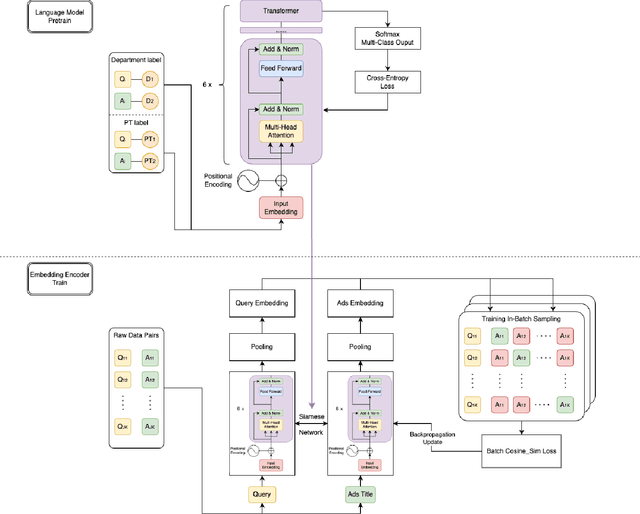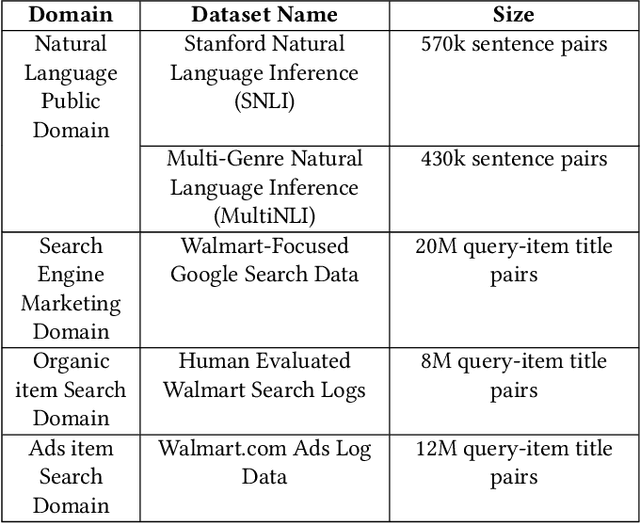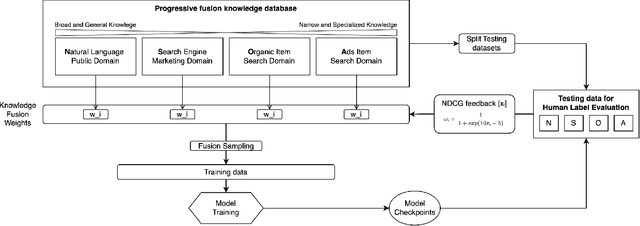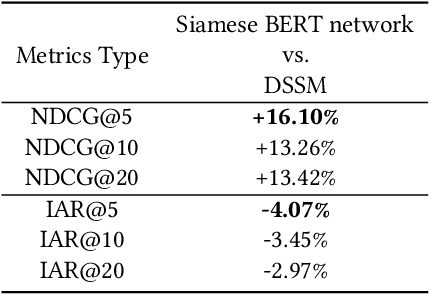Yanbing Xue
Semantic Ads Retrieval at Walmart eCommerce with Language Models Progressively Trained on Multiple Knowledge Domains
Feb 13, 2025



Abstract:Sponsored search in e-commerce poses several unique and complex challenges. These challenges stem from factors such as the asymmetric language structure between search queries and product names, the inherent ambiguity in user search intent, and the vast volume of sparse and imbalanced search corpus data. The role of the retrieval component within a sponsored search system is pivotal, serving as the initial step that directly affects the subsequent ranking and bidding systems. In this paper, we present an end-to-end solution tailored to optimize the ads retrieval system on Walmart.com. Our approach is to pretrain the BERT-like classification model with product category information, enhancing the model's understanding of Walmart product semantics. Second, we design a two-tower Siamese Network structure for embedding structures to augment training efficiency. Third, we introduce a Human-in-the-loop Progressive Fusion Training method to ensure robust model performance. Our results demonstrate the effectiveness of this pipeline. It enhances the search relevance metric by up to 16% compared to a baseline DSSM-based model. Moreover, our large-scale online A/B testing demonstrates that our approach surpasses the ad revenue of the existing production model.
Click-Conversion Multi-Task Model with Position Bias Mitigation for Sponsored Search in eCommerce
Jul 29, 2023Abstract:Position bias, the phenomenon whereby users tend to focus on higher-ranked items of the search result list regardless of the actual relevance to queries, is prevailing in many ranking systems. Position bias in training data biases the ranking model, leading to increasingly unfair item rankings, click-through-rate (CTR), and conversion rate (CVR) predictions. To jointly mitigate position bias in both item CTR and CVR prediction, we propose two position-bias-free CTR and CVR prediction models: Position-Aware Click-Conversion (PACC) and PACC via Position Embedding (PACC-PE). PACC is built upon probability decomposition and models position information as a probability. PACC-PE utilizes neural networks to model product-specific position information as embedding. Experiments on the E-commerce sponsored product search dataset show that our proposed models have better ranking effectiveness and can greatly alleviate position bias in both CTR and CVR prediction.
* Modified some typos of the published SIGIR version
Practical Lessons on Optimizing Sponsored Products in eCommerce
Apr 05, 2023



Abstract:In this paper, we study multiple problems from sponsored product optimization in ad system, including position-based de-biasing, click-conversion multi-task learning, and calibration on predicted click-through-rate (pCTR). We propose a practical machine learning framework that provides the solutions to such problems without structural change to existing machine learning models, thus can be combined with most machine learning models including shallow models (e.g. gradient boosting decision trees, support vector machines). In this paper, we first propose data and feature engineering techniques to handle the aforementioned problems in ad system; after that, we evaluate the benefit of our practical framework on real-world data sets from our traffic logs from online shopping site. We show that our proposed practical framework with data and feature engineering can also handle the perennial problems in ad systems and bring increments to multiple evaluation metrics.
 Add to Chrome
Add to Chrome Add to Firefox
Add to Firefox Add to Edge
Add to Edge